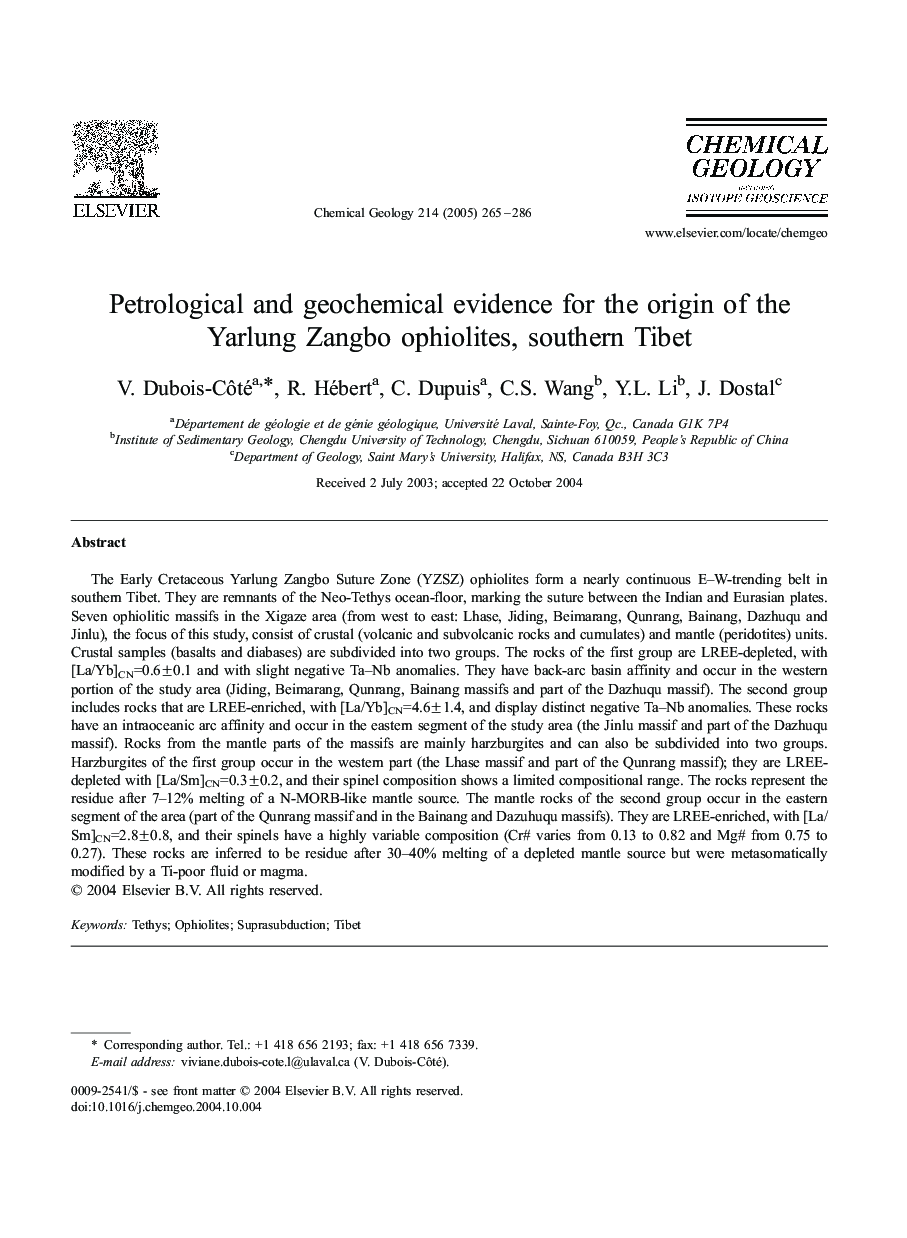| کد مقاله | کد نشریه | سال انتشار | مقاله انگلیسی | نسخه تمام متن |
|---|---|---|---|---|
| 9529236 | 1637794 | 2005 | 22 صفحه PDF | دانلود رایگان |
عنوان انگلیسی مقاله ISI
Petrological and geochemical evidence for the origin of the Yarlung Zangbo ophiolites, southern Tibet
دانلود مقاله + سفارش ترجمه
دانلود مقاله ISI انگلیسی
رایگان برای ایرانیان
موضوعات مرتبط
مهندسی و علوم پایه
علوم زمین و سیارات
ژئوشیمی و پترولوژی
پیش نمایش صفحه اول مقاله

چکیده انگلیسی
The Early Cretaceous Yarlung Zangbo Suture Zone (YZSZ) ophiolites form a nearly continuous E-W-trending belt in southern Tibet. They are remnants of the Neo-Tethys ocean-floor, marking the suture between the Indian and Eurasian plates. Seven ophiolitic massifs in the Xigaze area (from west to east: Lhase, Jiding, Beimarang, Qunrang, Bainang, Dazhuqu and Jinlu), the focus of this study, consist of crustal (volcanic and subvolcanic rocks and cumulates) and mantle (peridotites) units. Crustal samples (basalts and diabases) are subdivided into two groups. The rocks of the first group are LREE-depleted, with [La/Yb]CN=0.6±0.1 and with slight negative Ta-Nb anomalies. They have back-arc basin affinity and occur in the western portion of the study area (Jiding, Beimarang, Qunrang, Bainang massifs and part of the Dazhuqu massif). The second group includes rocks that are LREE-enriched, with [La/Yb]CN=4.6±1.4, and display distinct negative Ta-Nb anomalies. These rocks have an intraoceanic arc affinity and occur in the eastern segment of the study area (the Jinlu massif and part of the Dazhuqu massif). Rocks from the mantle parts of the massifs are mainly harzburgites and can also be subdivided into two groups. Harzburgites of the first group occur in the western part (the Lhase massif and part of the Qunrang massif); they are LREE-depleted with [La/Sm]CN=0.3±0.2, and their spinel composition shows a limited compositional range. The rocks represent the residue after 7-12% melting of a N-MORB-like mantle source. The mantle rocks of the second group occur in the eastern segment of the area (part of the Qunrang massif and in the Bainang and Dazuhuqu massifs). They are LREE-enriched, with [La/Sm]CN=2.8±0.8, and their spinels have a highly variable composition (Cr# varies from 0.13 to 0.82 and Mg# from 0.75 to 0.27). These rocks are inferred to be residue after 30-40% melting of a depleted mantle source but were metasomatically modified by a Ti-poor fluid or magma.
ناشر
Database: Elsevier - ScienceDirect (ساینس دایرکت)
Journal: Chemical Geology - Volume 214, Issues 3â4, 25 January 2005, Pages 265-286
Journal: Chemical Geology - Volume 214, Issues 3â4, 25 January 2005, Pages 265-286
نویسندگان
V. Dubois-Côté, R. Hébert, C. Dupuis, C.S. Wang, Y.L. Li, J. Dostal,